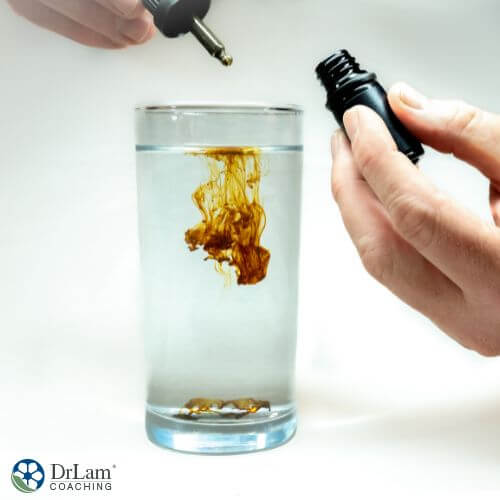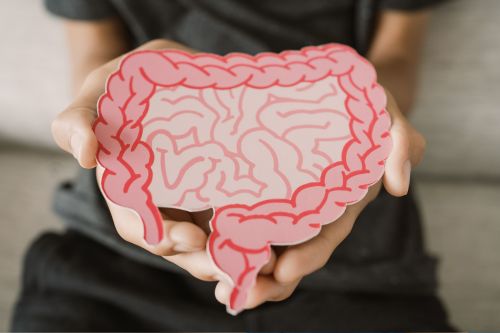 Chronic fatigue is a condition that was first recognized in 1988. Around five to nine million Americans experience it. This condition may last for years, and it not only affects your health but also your quality of life. There is no quick fix for this condition nor any FDA-approved therapies. However, there are many remedies available that may help symptoms and one of these is silver. You may associate silver with jewelry, but this metal has many more uses and can play an important role in preventing and managing illnesses like chronic fatigue. This article will explore the link between silver and chronic fatigue and how it can potentially help.
Chronic fatigue is a condition that was first recognized in 1988. Around five to nine million Americans experience it. This condition may last for years, and it not only affects your health but also your quality of life. There is no quick fix for this condition nor any FDA-approved therapies. However, there are many remedies available that may help symptoms and one of these is silver. You may associate silver with jewelry, but this metal has many more uses and can play an important role in preventing and managing illnesses like chronic fatigue. This article will explore the link between silver and chronic fatigue and how it can potentially help.
Silver is a chemical element as well as an abundant precious metal. It has many uses in healthcare including being an important component in dental fillings and as a disinfectant. The elemental sign for silver is Ag and when this element is by itself and has a positive charge, it can be bioactive, meaning it can have an effect on a living organism.
There are several different forms and compositions of silver, and one of these forms is colloidal silver. This is when silver particles are suspended in a liquid, namely water. These particles are minuscule and give the liquid a grayish, metallic color. The use of colloidal silver in healthcare dates back to the early 20th century. However, there was a reduction in its use after the discovery of conventional antibiotics.
Before exploring the potentially beneficial link between silver and chronic fatigue, it's important to understand exactly what chronic fatigue is. Whilst fatigue is tiredness that usually resolves, chronic fatigue is when you experience fatigue for at least six months without improvement after rest. Chronic fatigue is more prevalent in females than in males and most frequently occurs in the mid-20s to mid-40s. Chronic fatigue is a group of symptoms and is actually a medical diagnosis in the sense that there is a ICD code associated with those set of symptoms. Adrenal fatigue is not an actual medical diagnosis, but many of the symptoms do overlap with chronic fatigue, and therefore those who have adrenal fatigue who go see the doctor might actually get the diagnosis of chronic fatigue. Adrenal Fatigue Syndrome (AFS) is the non-Addison's form of adrenal dysfunction, where the body's stress response cannot keep up with life's chronic stressors.
In short-term stress, your body releases cortisol to assist your body in coping with the stress. Your body also has the NeuroEndoMetabolic (NEM) Stress Response System which helps to support your body in stress. If stress becomes constant, your adrenal glands are unable to keep up with the demand for cortisol and start to become depleted. This results in a low amount of cortisol and imbalances within the NEM system. These two factors then result in AFS.
Chronic fatigue is different from general tiredness and includes extreme tiredness from simple activities such as driving or going out. Chronic fatigue doesn't improve with sleep and also includes a range of other symptoms including:
 Brain fog - difficulty thinking and remembering
Brain fog - difficulty thinking and rememberingA range of different factors may contribute to the onset of chronic fatigue. These include:
Silver may help combat some of these causes of chronic fatigue.
Before the discovery of conventional antibiotics, colloidal silver was used to manage infections with its antibacterial properties. Silver particles attach themselves to the cell walls of the bacteria. Once attached, they affect the cell wall by increasing its permeability. This allows for the silver to enter the bacteria cells.
Once inside the cells, they can start to interact with various aspects of the cell such as the DNA. The particles containing silver then release silver ions which have multiple effects such as inhibiting the growth of the cell and affecting the signaling of the cell. These particles can also help to induce the process of neutrophil extracellular traps (NETosis).
Neutrophils are one of the cells of your immune system and are a type of white blood cell. These traps enable your white blood cells to capture and destroy pathogens. The cells that are destroyed by silver then become reservoirs of silver and can be effective against other active bacterial cells (1).
The use of silver against bacteria does not depend on whether or not the bacteria is resistant to conventional antibiotics and can be used with many different bacteria. Research has also found that silver can also increase the effectiveness of conventional antibiotics. This can make it effective in the management of chronic fatigue if it is being caused by bacteria.
The exact mechanism of action that silver uses to reduce viruses is unknown. However, there are multiple theories as to how it does work. These theories include that it inhibits the infection of the cells and directly inactivates the virus. Like in bacterial cells, silver also disrupts the permeability of the cell membrane of virus cells and destroys the DNA of the viruses. These two mechanisms of action reduce the replication of the cells, thus reducing the spread of the virus.
Various different metals have antiviral properties. However, silver has shown to be the most effective metal at reducing viruses and has been found to be effective on a range of different viruses from different viral families. The viruses that silver has been shown to be effective against include:
These viruses are some of the many viruses that can cause chronic fatigue. Whilst there is a link between silver and chronic fatigue in the form of anti-viral action, guidance and support from a healthcare professional are necessary.
When there is illness, stress, and trauma to the body, free radicals increase. These are simply unstable molecules that can cause damage to your cells and increase inflammation. These molecules act as mediators for a variety of different immune cells. When free radicals increase in the body, it can cause your immune system to become dysfunctional. Silver can reduce free radicals by neutralizing them. Not only does this reduce further cell damage and improve inflammation, but it will help to keep your immune system functioning optimally (3).
 Another way that silver can help to improve your immunity is through the gut. 70% of your immune system is in your gut. Therefore the health of your gut will determine the health of your immune system. Due to conventional medications, stress, inflammation, and chronic stress, your gut health can decline. This happens because of the increase in harmful bacteria and the reduction of beneficial bacteria in your body. The shift in bacteria can also cause your gut cells to become more permeable, otherwise known as a 'leaky gut'. This allows pathogens to enter your bloodstream through your gut cells. When pathogens enter your bloodstream they can cause you to become sick more frequently such as a frequent sore throat as well as aches and pains.
Another way that silver can help to improve your immunity is through the gut. 70% of your immune system is in your gut. Therefore the health of your gut will determine the health of your immune system. Due to conventional medications, stress, inflammation, and chronic stress, your gut health can decline. This happens because of the increase in harmful bacteria and the reduction of beneficial bacteria in your body. The shift in bacteria can also cause your gut cells to become more permeable, otherwise known as a 'leaky gut'. This allows pathogens to enter your bloodstream through your gut cells. When pathogens enter your bloodstream they can cause you to become sick more frequently such as a frequent sore throat as well as aches and pains.
Colloidal silver can be ingested, and if it is ingested with aloe vera, it can survive the acidity of your stomach. In the gut, it can potentially help to reduce bacteria and viruses in your gut. This reduces the chance of bacteria entering your bloodstream and can improve chronic fatigue. There have been concerns about whether or not silver will further reduce the beneficial bacteria in the gut as conventional medications such as antibiotics do. Whilst more research is necessary, a mouse study demonstrated that the administration of silver for 28 days had no effect on the beneficial bacteria (4).
When looking at the link between silver and chronic fatigue, you may be wondering if silver will provide relief from the symptoms as well as help to reduce the cause of the condition.
While research is limited on the link between silver and chronic fatigue, if you consider its antimicrobial and anti-inflammatory properties as well as its protection of the immune system, it may help to provide relief from symptoms.
The main symptom of chronic fatigue is tiredness. Whilst silver may not improve energy levels directly, it may indirectly help to combat the cause of chronic fatigue. This may reduce other symptoms such as aches and pains, frequent sore throats, and an increase in sensitivity to chemicals and foods.
Colloidal silver comes in a range of different applications. These include:
In some of these applications, silver is applied to the skin or mucous membranes. If silver enters the body through an IV or is swallowed, it will bind to chloride, a negatively charged ion, and will be passed through your bile or urine. Your body will eliminate 99% of silver within 24 hours. Silver does not have any biological effect on your body, will not accumulate, and therefore cannot be toxic.
This depends on what application of silver you are using. The length of silver usage will depend on the condition. In the case of chronic fatigue, as it is a chronic condition, your healthcare professional may recommend silver be used over a period of months. The use of silver may need to be consistent for optimal results.
In the case of mouthwashes, the silver can be kept in the mouth under the tongue for two to three minutes. If you have been recommended to swallow the silver, then you can swallow it after this time period. This mode of application is also a way to use silver for preventing illness and was a popular prevention method during the height of Covid-19. In the case of chronic fatigue, silver can help to prevent further illnesses that can be brought on by a reduced immune system.
Creams and dressings are a form of application reserved for wounds and burns, whilst nebulization would be used for lung conditions. The use of IV silver can be used for many different infections that can cause chronic fatigue such as Covid-19, HIV/AIDs, and hepatitis.
 Whilst there is a beneficial link between silver and chronic fatigue due to silver's many properties, there are cautions to be mindful of. The research currently done on silver as an anti-bacterial and anti-viral has found that the size of the silver particles is important. These particles need to be within one to ten nanometers in order to penetrate the cells.
Whilst there is a beneficial link between silver and chronic fatigue due to silver's many properties, there are cautions to be mindful of. The research currently done on silver as an anti-bacterial and anti-viral has found that the size of the silver particles is important. These particles need to be within one to ten nanometers in order to penetrate the cells.
Unfortunately, while there are many silver products on the market, some products can be mislabeled and rather have silver salts. These are insoluble, meaning they don't dissolve in water and clump together in clusters. This can cause your skin as well as mucous membranes to become permanently gray or gray-black colored.
This condition, also known as argyria, can be due to long-term ingestion of products containing silver salts or exposure through work. If the dose of silver is too high and is taken frequently, rare side effects such as kidney dysfunction and seizures can occur. This makes it important to seek medical guidance on the correct dose of silver for your body and needs.
Silver also interacts with certain medications, so if you are interested in the relationship between silver and chronic fatigue and would like to try it, always check with your healthcare provider first. It's also important to remember that silver cannot replace certain medications and any changes to medications that you are currently on should be approved by your healthcare provider.
The NEM system consists of six different circuits of related organ systems, and one of these circuits is the Inflammation circuit. This circuit helps to regulate the inflammation in your body and consists of the immune system, gastrointestinal tract, and gut microbiome.
If the circuit become imbalanced, inflammation can increase in your body and it can result in aches and pains, frequently getting sick, a 'leaky gut', and food sensitivities. You may note that these symptoms are similar to symptoms of chronic fatigue. Whilst more research is necessary, silver can potentially help to alleviate symptoms of an imbalanced Inflammation circuit. This is done by reducing infections in the gut, preventing them from passing through the gut into the bloodstream. Whilst it won't enhance your gut microbiome, it won't negatively affect it, and it can help to strengthen your immune system.
Like with silver and chronic fatigue, the same cautions apply to the use of silver in AFS, and more care is necessary as the body can become incredibly sensitive in AFS. This can cause extreme reactions, setting you back in your healing journey. This makes it important to seek support from your healthcare provider before trying silver if you are currently experiencing AFS.
Adrenal fatigue is a syndrome that makes individuals desperate for relief. Whilst there is limited research on the link between silver and chronic fatigue, there is research on the effects of silver being:
These effects may potentially offer some relief to individuals with chronic fatigue and may assist in reducing some causes of the condition. If you have recently been experiencing extreme tiredness and feel that your body is more sensitive than usual, getting support is important in improving your wellness as well as your quality of life. You can call the Dr. Lam team at +1 (626) 571-1234 or click here for a free initial call.
Mohamed DS, et al. "Antimicrobial Activity of Silver-Treated Bacteria Against Other Multi-Drug Resistant Pathogens In in their Environment." Antibiotics, vol. 9, no. 4, 2020 Apr. pp. 181. https://www.ncbi.nlm.nih.gov/pmc/articles/PMC7235873/
Ratan ZA, et al. "Silver Nanoparticles as Potential Antiviral Agents." Pharmaceutics. vol. 13, no. 12, 2021 Dec. pp.2034 https://www.ncbi.nlm.nih.gov/pmc/articles/PMC8705988/
Ninan N, et al. "The Impact of Engineered Silver Nanomaterials on the Immune System." Nanomaterials, vol. 10, no. 5, 2020 May, pp. 967 https://www.ncbi.nlm.nih.gov/pmc/articles/PMC7712063/
Wilding LA, et al. "Repeated Dose (28 Day) Administration of Silver Nanoparticles of Varied Size and Coating Does Not Significantly Alter The Indigenous Murine Gut Microbiome." Nanotoxicology, vol. 10, no. 5, 2016 Nov. pp. 513-20. https://www.ncbi.nlm.nih.gov/pmc/articles/PMC5023147/
Whilst there is a link between silver and chronic fatigue, it’s important to remember that some side effects are permanent. Taking the wrong form can lead to graying skin, and high doses cause organ problems. With the benefits, depending on the length of the infection, silver may have to be administered for a long period of time for results.
